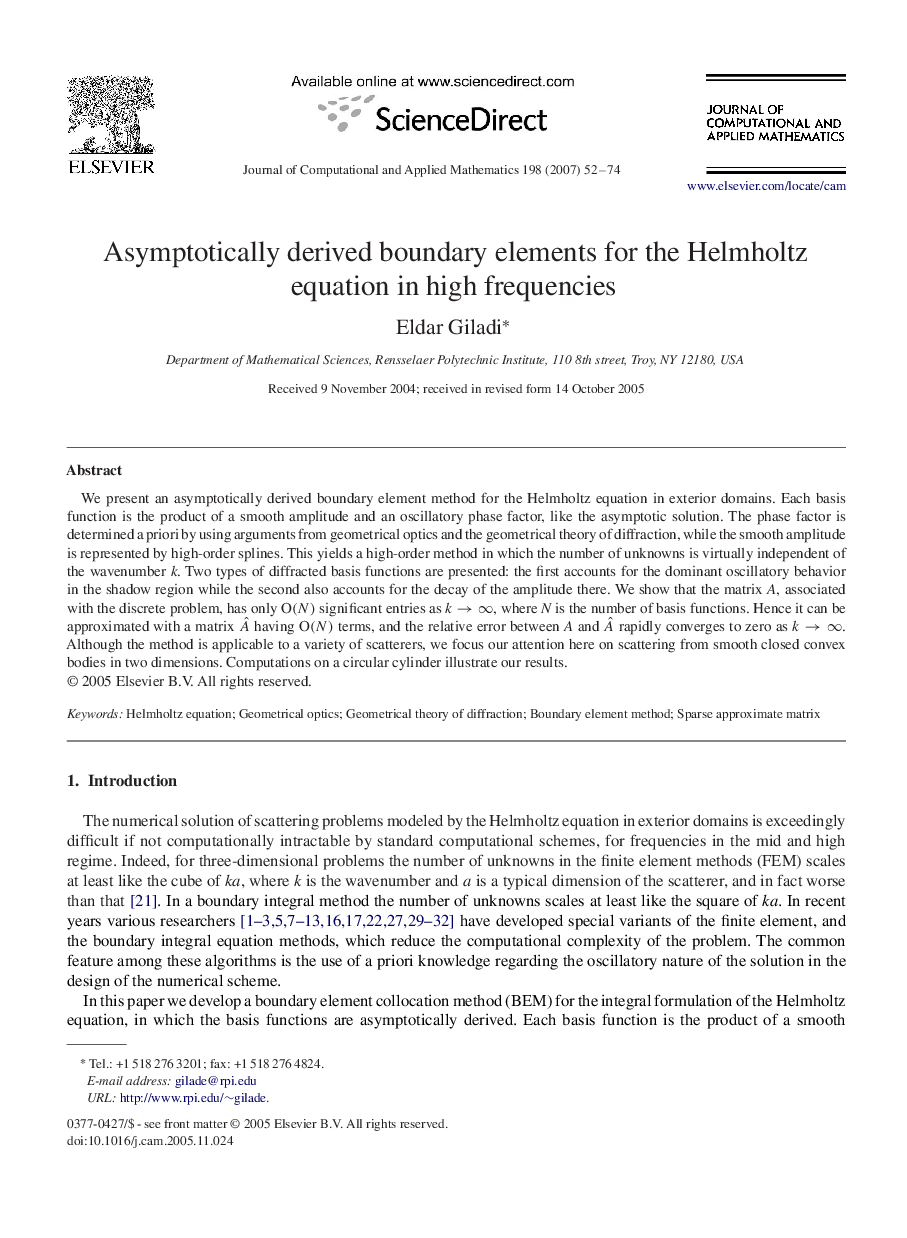| Article ID | Journal | Published Year | Pages | File Type |
|---|---|---|---|---|
| 4643031 | Journal of Computational and Applied Mathematics | 2007 | 23 Pages |
We present an asymptotically derived boundary element method for the Helmholtz equation in exterior domains. Each basis function is the product of a smooth amplitude and an oscillatory phase factor, like the asymptotic solution. The phase factor is determined a priori by using arguments from geometrical optics and the geometrical theory of diffraction, while the smooth amplitude is represented by high-order splines. This yields a high-order method in which the number of unknowns is virtually independent of the wavenumber k. Two types of diffracted basis functions are presented: the first accounts for the dominant oscillatory behavior in the shadow region while the second also accounts for the decay of the amplitude there. We show that the matrix A , associated with the discrete problem, has only O(N)O(N) significant entries as k→∞k→∞, where N is the number of basis functions. Hence it can be approximated with a matrix A^ having O(N)O(N) terms, and the relative error between A and A^ rapidly converges to zero as k→∞k→∞. Although the method is applicable to a variety of scatterers, we focus our attention here on scattering from smooth closed convex bodies in two dimensions. Computations on a circular cylinder illustrate our results.
